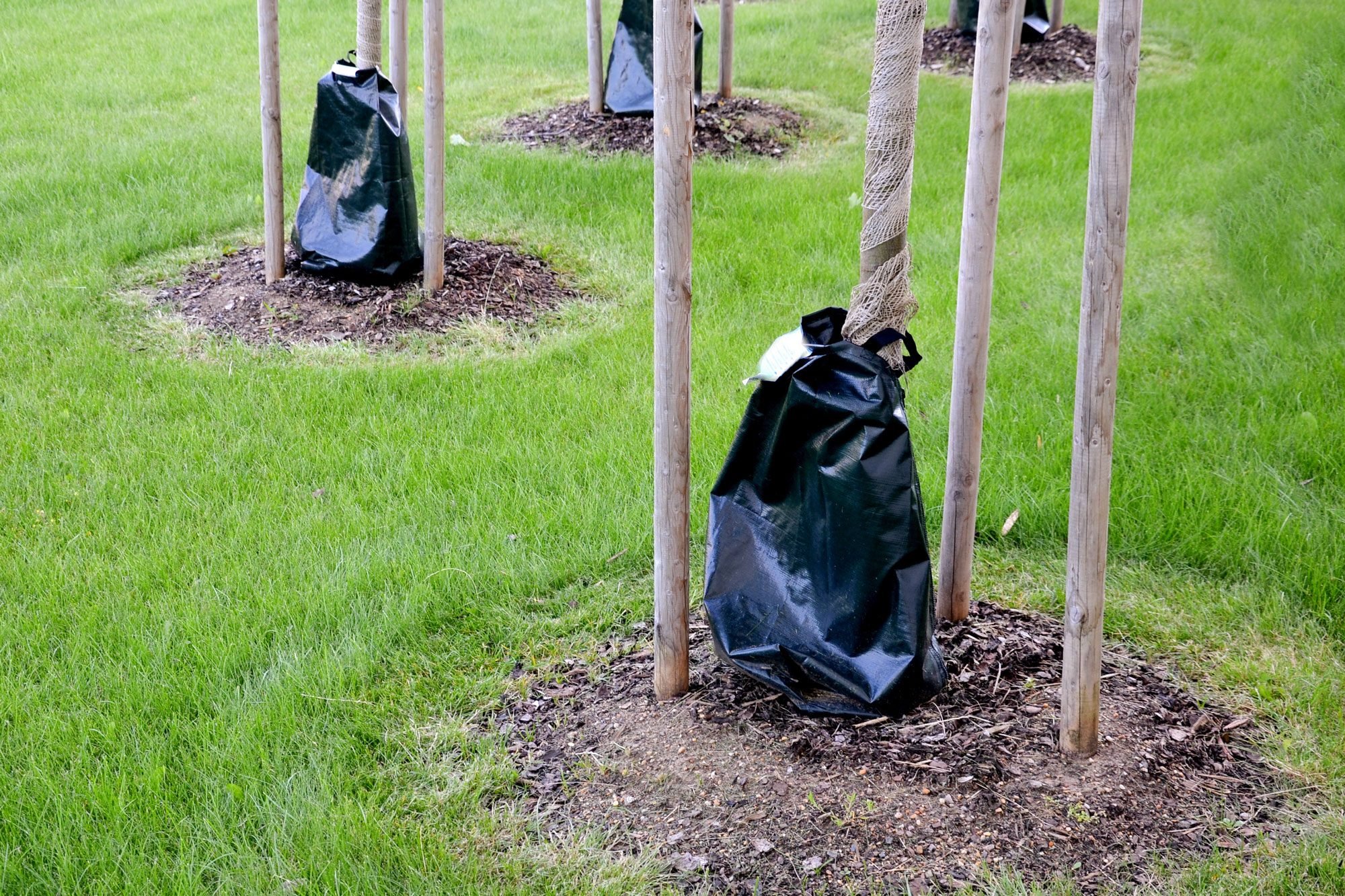Do you know what tree watering bags are? Learn the pros and cons of utilizing them for newly planted trees and shrubs.

Should You Be Using a Tree Watering Bag?

Living in the semi-arid West, the hardest part of planting new trees and shrubs is keeping them consistently and adequately watered. Tree watering bags save me lots of time and effort, because they let me plant out of reach of the hose.
Though they work well for me, it’s important to know the pros and cons of this ingenious invention to determine whether it’s the best option for you.
On This Page
What Is a Tree Watering Bag?
These are sturdy plastic bags with micro-perforations that slowly release water to hydrate the tree or shrub. Here’s one of the original designs from Treegator, which are available to buy online.
Holding 15 to 20 gallons, they’re available in upright models that wrap around a tree trunk, or donut-shaped designs better suited for multi-stemmed shrubs.
How Does a Tree Watering Bag Work?
They slowly release water over five to nine hours, allowing the moisture to soak into the soil instead of running off. Tree watering bags work well on young trees or shrubs, but can also be used for established ones requiring additional water.
For newly planted trees or shrubs, water well after planting, then place the bag around the trunk and secure with the zipper. Shorter profile bags set on the ground, encircling the tree or shrub. Lift the bag with the handles to spread out the bottom, then fill the bag to the top.
In general, a newly planted tree requires 10 gallons of water per inch of the trunk diameter when it’s measured six inches above the soil. This means a 2-in.-dia. tree needs a minimum 20 gallons of water every week. In hot weather, or if you planted the tree in sandy soil, give it more. Mark your calendar so you don’t forget to refill the bags.
When you’re done with the watering bags for the season, drain them and tip them upside down to dry before storing them. With proper care, they’ll last for many years.
Should You Use a Tree Watering Bag?
Tree watering bags work well for many situations, but not all. Here are some instances when they’re a good idea:
Establishing trees and shrubs
New plantings require constant attention, and bags provide adequate water without much fussing.
Water conservation
Tree watering bags let you know precisely how much water the tree receives, because over-watering is just as detrimental as under-watering. Over-watering also wastes water and money.
Plus, they direct water where it’s needed. There’s no point in using a sprinkler that waters the tree and half your lawn if the lawn doesn’t need it.
Arid and semi-arid regions
In dry climates, adequate and consistent water reduces stress on newly-planted trees. In semi-arid and arid regions, additional water the following season prevents established trees and shrubs from drying out during months of no rain.
Beyond sprinkler zones
Tree watering bags let you to plant where there isn’t water. It’s easiest to run a hose to the bag to refill it. But even when out of reach, you can haul water in a tank or buckets to refill the bags.
Drawbacks of Tree Watering Bags
While tree watering bags have many benefits, we also need to know when they don’t work as well.
Hot water
While useful in dry climates, in Southern regions the water quickly heats in the sun, and hot water is not good for tree roots. Either remove the bags before the heat of summer or fill them in the evening.
Hiding places for pests
In hot and humid areas, bags that wrap around the trunk create a dark, humid environment, a vector for disease and potential damage to the trunk. Check the area along the tree frequently for signs of damage or disease, along with telltale insects like pill bugs or earwigs that feed upon decaying matter.
Root ball girdling
Another potential issue with long-term use involves too much water on the root ball, which can cause girdling of the roots. This condition causes the roots to grow in a spiral that ultimately chokes the tree.
Use tree watering bags as temporary tools, then focus long-term on soaking the tree at the drip line, the outer extent of the tree canopy.




















